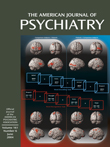To the Editor: The provocative argument of Michael Alan Taylor, M.D., and Max Fink, M.D., that catatonia should be classified as an independent syndrome
(1) confuses the distinction between catatonia and delirium. In particular, there is a prominent overlap between delirious and malignant catatonia with delirium due to medical condition, as defined by DSM-IV-TR.
As consultation-liaison psychiatrists, we see delirium daily. Delirium may be characterized by acute psychomotor hypoactivity or hyperactivity
(2) and a “disturbance of consciousness (i.e., reduced clarity of awareness of the environment) with reduced ability to sustain focus or shift attention” (DSM-IV-TR). Delusions and hallucinations are common, and symptoms classically wax and wane. In catatonia, consciousness and alertness are not typically impaired
(3).
Clearly, it is difficult to distinguish delirium from Drs. Taylor and Fink’s view of malignant catatonia: “acute onset of excitement, delirium, fever, autonomic instability, and catalepsy”
(1, p. 1236). There is also considerable overlap between their definition of regular catatonia, “motor abnormalities that occur in association with changes in thought, mood, and vigilance” (p. 1234), and delirium, as described. Drs. Taylor and Fink expound on malignant catatonia and its significant mortality by saying that “most patients died” in pre-ECT days. However, fever, confusion, and psychomotor abnormalities may simply have been manifestations of an underlying illness that was not diagnosed. Many of the references quoted are from the 1970s, before sophisticated diagnostic imagery was available, and do not include a comprehensive delirium workup that we would expect as standard in 2003. In our opinion, fever, confusion, psychomotor abnormalities, and autonomic instability in the presence or absence of delusions and hallucinations should be viewed as delirium and worked up and treated as such.
We note, as did Drs. Taylor and Fink, that there have been no controlled treatment trials of catatonia. Therefore, to state that benzodiazepines, barbiturates, and ECT relieve or resolve catatonic episodes is an expert opinion that lacks objective validity. There is evidence from the double-blind controlled study by Breitbart et al.
(4) that lorazepam may not be effective as a single agent in the treatment of delirium. To view neuroleptic malignant syndrome and serotonin syndrome as variants of catatonia and to state that the treatment is the same is, in our opinion as consultation-liaison psychiatrists, premature and flies in the face of current practice.
Finally, their subheading, “Common Causes of Catatonia,” is misleading. Drs. Taylor and Fink use “causes” and “associations” of catatonia interchangeably. Mood disorders, general medical and neurological conditions, and genetic abnormalities may be associated with catatonia, but there is no strong evidence that they are causal. The etiology of “catatonia” remains unknown, and we lack biological (endophenotypical) markers that could provide further evidence to support the existence of catatonia as a separate disorder.
It is our opinion that the expanded meaning of catatonia offered in this article is problematic and confusing. Catatonia is best left to its association with schizophrenia and bipolar disorder, as Kaplan and Sadock
(3) have clearly done. It should be clearly distinguished from the hypoactive and hyperactive delirium that we see daily on medical wards.

